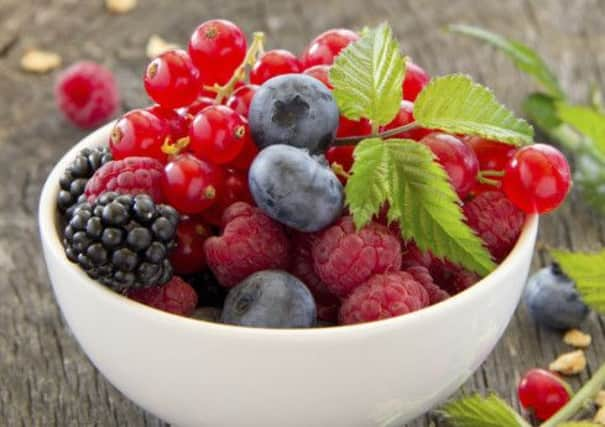Country & Coast: Roger Ratcliffe


These fat and juicy berries are the fruits of the dog rose which brightens many a hedgerow in summer, and according to my wonderful old Ladybird book, ‘What To Look for in Autumn’, they shouldn’t turn scarlet until late September.
But such is the topsy-turvy life in England’s countryside brought about by climate change that a friend found rose-hips all ripe and blushing in East Yorkshire on the day of the men’s final at Wimbledon.
Advertisement
Hide AdAdvertisement
Hide AdThese mega-vitamin C berries - mothers turned them into syrup to keep children free of coughs and colds during the Second World War - are not the only ones to have ripened early.
While walking near the Swaledale village of Gunnerside in the second week of July I saw plenty of red hawthorn fruits, and on the edge of Baildon Moor in West Yorkshire I was plucking plump blackberries to eat close to the boundary of Tong Park Cricket Club before I had flicked over the page of my calendar to August.
I’m told that this year’s first ripe blackberries in Yorkshire were all east of the A1, the earliest seen on July 7. Compare that with last year’s average of August 17. Ripe rowan berries followed a similar pattern.
Conkers already look like they’re about to fall from the horse-chestnut trees which line the main street in Saltaire. I’ve also seen beech nuts on a tree near Otley.
Advertisement
Hide AdAdvertisement
Hide AdThese are two events which a network of more than 30,000 observers are currently reporting to a UK-wide survey called ‘Nature’s Calendar’ run by the Woodland Trust and the Centre for Ecology and Hydrology.
Observations made as part of the survey over recent years indicate that our seasons are indeed undergoing remarkable change.
Although the weather from year to year does make a difference to what flourishes when - the cold spring of 2013 produced late growth - the project is finding a trend towards early spring and autumn events.
For example, there is a pattern of birds which are summer migrants leaving the country earlier for their winter quarters in Africa.
Advertisement
Hide AdAdvertisement
Hide AdAccording to the Met Office, autumn begins on the first day of September and ends on the last day of November, but the picture is becoming increasingly blurred with the earliest signs of the season now appearing as early as late June.
Signs of spring, too, are evident much earlier than before, with some blackbirds building their nests before Christmas and butterflies spotted on mild winter days.
Dr Kate Lewthwaite, who is manager of the Nature’s Calendar project, believes climate change is confusing wildlife.
Summers and winters are shorter, leaving spring and autumn as the main seasons.
Advertisement
Hide AdAdvertisement
Hide Ad“This year we’re seeing a much wider abundance of earlier fruiting in 2014,” she told me.
“Hopefully this will last long enough to ensure wildlife has enough reserves into winter too. We need people across Yorkshire to keep their eyes open for other signs, such as leaves changing colour. The more records we collect the better we can interpret changes in the natural world.”
To become a Nature’s Calendar recorder, visit the project’s website at www.naturescalendar.org.uk